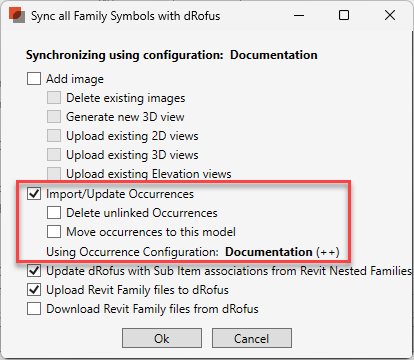Revit IFC GUIDs for all occurrences
dRofus always adds an IFC GUID from all instances in Revit to all occurrences in dRofus because the IFC GUID is the globally unique identifier that ensures every element remains distinct and traceable across different software platforms and project phases. This is essential for several reasons:
Interoperability: The IFC GUID is the universal key that allows dRofus to reliably match and synchronize data between Revit models and dRofus, as well as with any other BIM tool that supports the IFC standard. This ensures that information about each object stays consistent, even when models are exchanged or updated across different systems.
Data Integrity and Change Tracking: By storing the IFC GUID for every occurrence, dRofus can accurately track changes, manage versions, and avoid duplications. This is especially important in large, collaborative projects where multiple stakeholders must access and update the same objects over time.
Error Reduction: Using the IFC GUID as a common key minimizes the risk of mismatches or data loss during import, export, or synchronization. This reduces errors when linking Revit instances to dRofus occurrences and ensures that updates propagate correctly throughout the project lifecycle.
Seamless Visualization and Coordination: With IFC GUIDs, dRofus can link 3D model elements directly to their associated data, enabling robust visualization and coordination features such as highlighting, selection, and data-driven model navigation.
Always adding IFC GUIDs from Revit to dRofus is crucial because it underpins reliable data exchange, robust change management, and seamless collaboration—core requirements for successful BIM workflows in complex, multi-stakeholder projects.
These IFC GUIDs are added to the background without being defined in the configurations.

Using Items in Room when occurrences are split, each row will show the IFC GUIDs
Note that Has IFC GUIDs is a column to check if any planned occurrences match the modeled instances, and IFC GUIDs (text) shows the specific IFC GUIDs extracted from Revit.

Using Occurrences in the Item Module shows planned occurrences vs modeled instances.
In this example, we can see that in the Library, there is an occurrence with a planned quantity of six, and there are six IFC GUIDs to show that what was planned has been modeled.
We can also see that the following room has ten planned occurrences and only one IFC GUID, so this room has a need for nine more instances in the model to meet the required plan.
When are IFC GUIDs added to the occurrences?
There are several ways that IFC GUIDs are added to an occurrence.
Items in Room, Level, or Model - each time the occurrences are synced

Sync selected, by view or with systems - each time the occurrences are synced

Sync Items to Families - when Sync is used with occurrences.


.png)